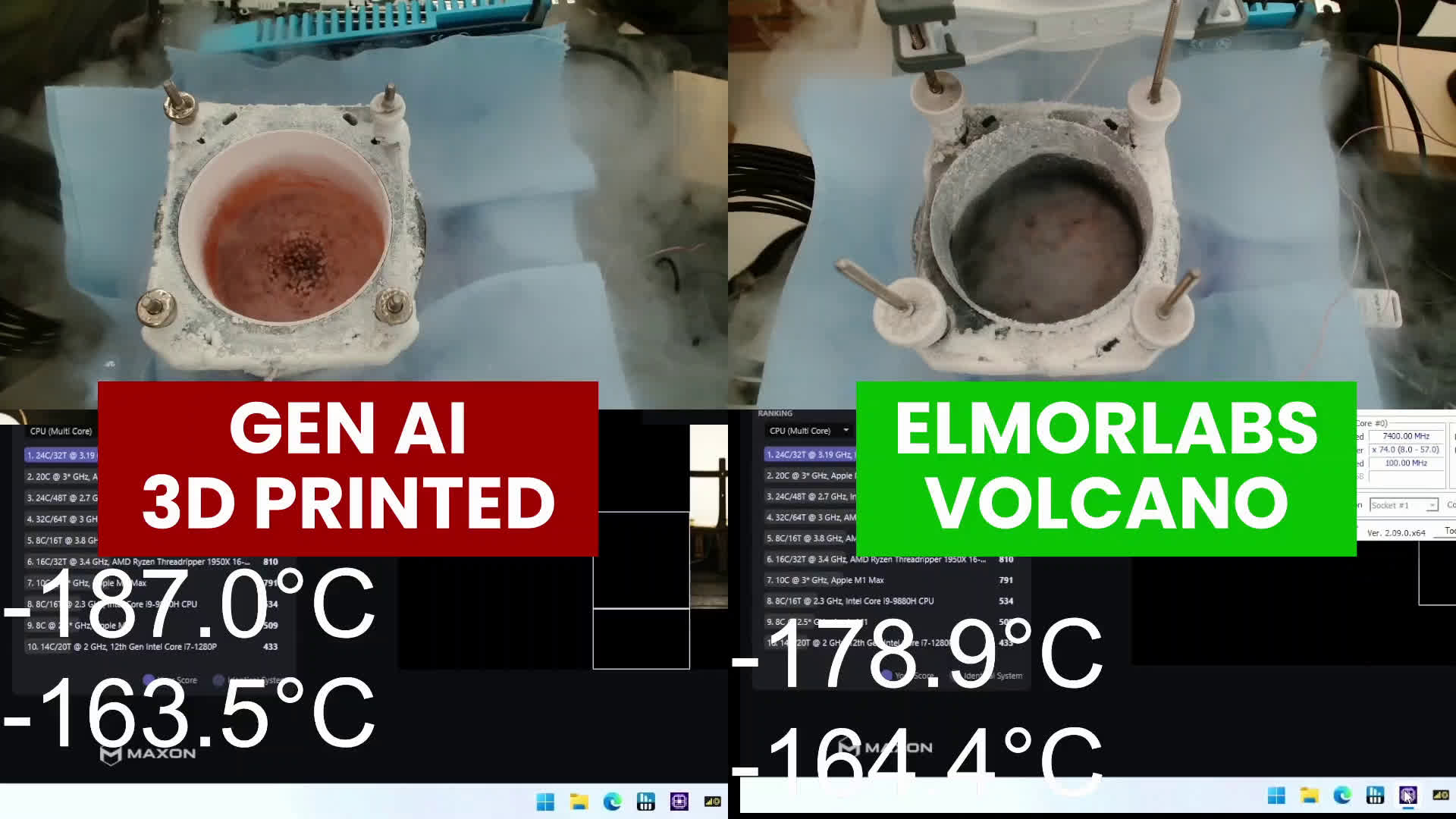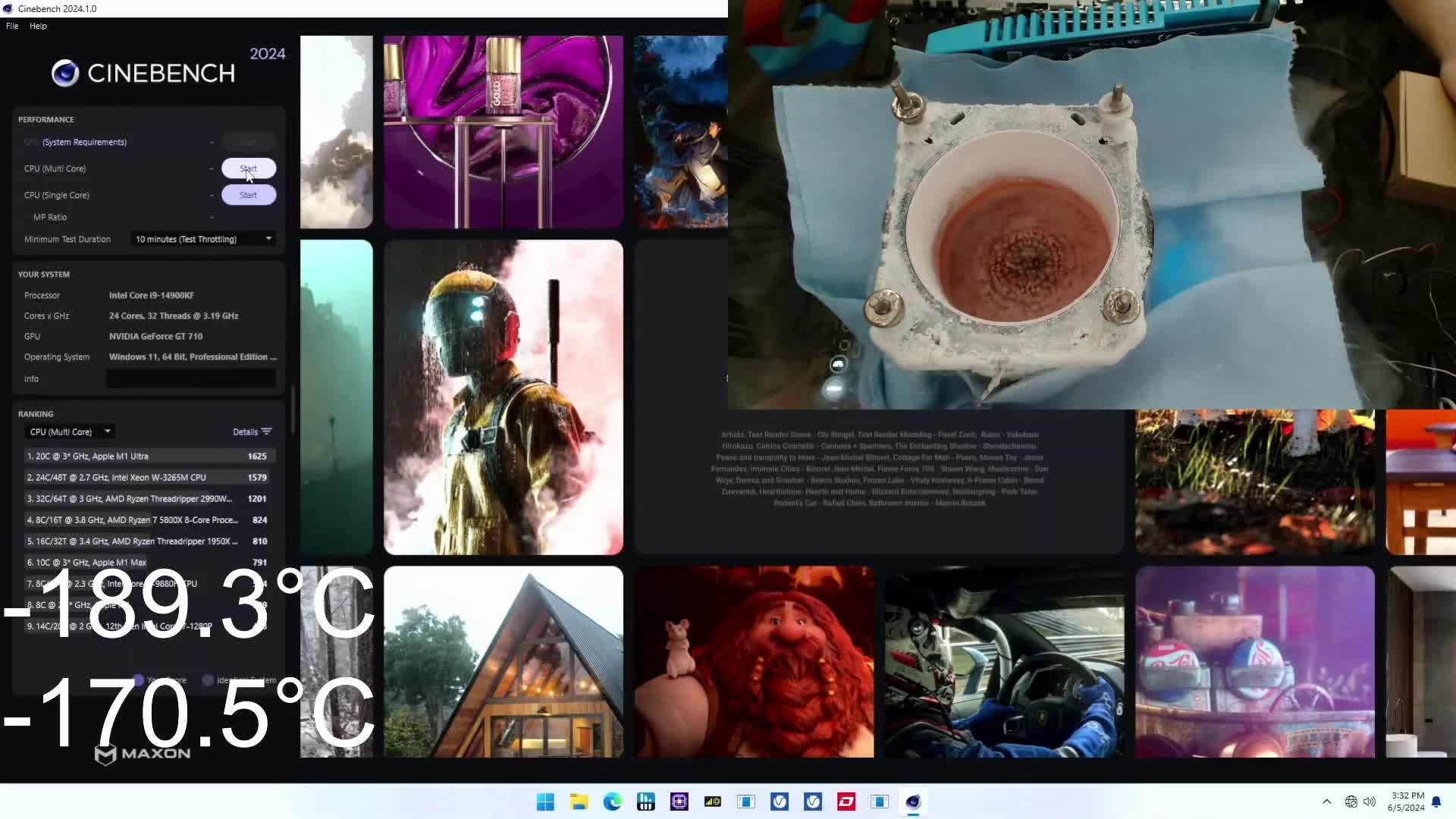Pushing the limits: Enthusiasts are continuously seeking an edge in overclocking and extreme cooling. In a daring experiment, the team aimed to determine if advanced GenAI and 3D printing could boost today’s processors’ performance. To find out, they built a liquid nitrogen (LN2) container in an entirely new way, arriving at some intriguing conclusions.
The project gathered experts from various sectors: Skatterbencher, famous for overclocking expertise; Diabatix, specializing in generative AI for thermal solutions; 3D Systems for additive manufacturing; and ElmorLabs for overclocking equipment.
The team used ElmorLabs’ original Volcano LN2 container as a benchmark and tasked Diabatix’s ColdStream Next AI with generating an improved design. 3D Systems then transformed that digital blueprint into reality by 3D printing a prototype with oxygen-free copper powder. However, this cutting-edge process came with a hefty price tag of $10,000, a significant leap from the $260 cost of the original Volcano.
The AI/3D printed design demonstrated promise in initial tests, focusing on three crucial metrics: cool-down time from room temperature to -194°C, heat-up time from -194°C to 20°C under a 1250W load, and the lowest temperature achieved using 500mL of liquid nitrogen.
It surpassed the Volcano in cool-down speed, chilling from 28°C to -194°C in under a minute compared to the Volcano’s 3-minute pace. Heat-up performance also improved, with the AI container warming up 30% faster. Efficiency was another win for the AI design – using 500mL of LN2, it reached -133°C, while the Volcano stalled at -100°C.
However, to verify real-world performance, the team conducted three additional tests using the Intel Core i9-14900KF Raptor Lake processor. They began with Cinebench 2024 to determine the most stable maximum CPU frequency.
“Both LN2 containers handled the Core i9-14900KF with P-cores clocked to 7.4 GHz without issues. The AI-generated design seemed to sustain 7.5 GHz marginally longer, but this could be due to run-to-run variation,” they observed.
Next, they assessed the CPU temperature deltas between the heat spreader and the cooling container base to evaluate actual heat transfer capabilities, followed by an intense stress test pushing over 600W through the chip for several minutes.
Although the AI container showed slight advantages, the gains were relatively modest compared to the theoretical test results. Temperature deltas between the CPU heat spreader and container base were tighter on the 3D-printed model but not significantly. Even the performance uplift in Cinebench was modest, as reflected above.
After analyzing the data, the team concluded that while technically impressive, the AI/3D printed design is currently not cost-effective for modest overclocking scenarios, especially with a $10,000 price tag.
However, the team isn’t finished. Although there is “nothing concrete” yet, they are exploring performance and cost optimizations. The design of the LN2 container doesn’t necessarily need to be circular, for instance. They are also investigating new designs for higher-power CPUs like the Ryzen Threadripper or Intel’s Xeon 6.
Ultimately, while the feasibility study revealed some limitations, it also demonstrated that generative AI has more promising applications than merely creating six-fingered models.






